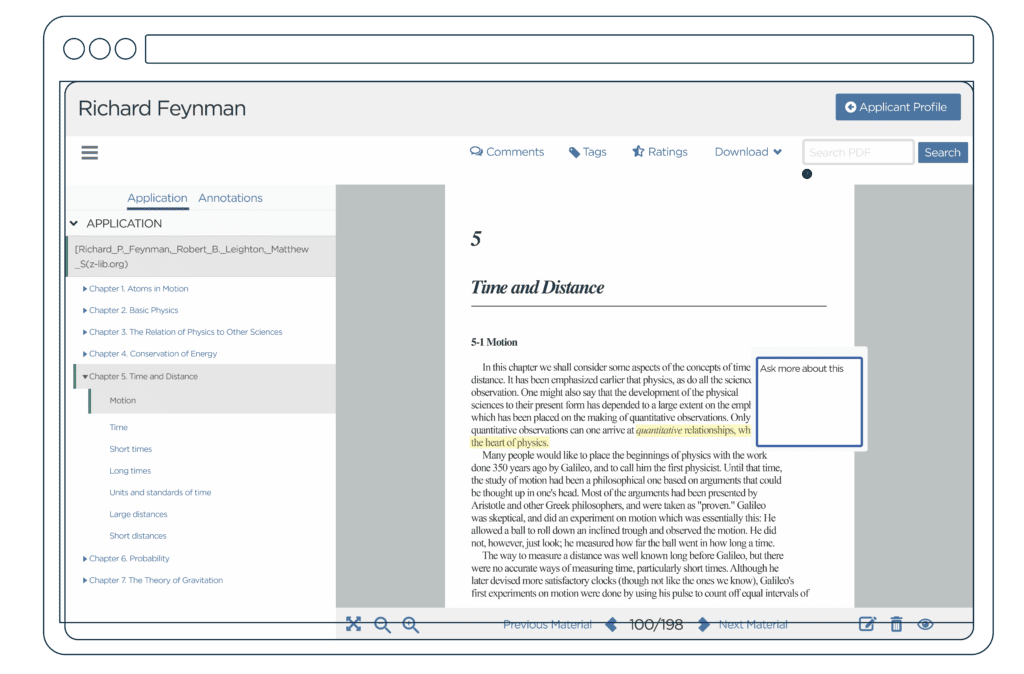If your institution is using general, sector-agnostic faculty recruiting software to recruit candidates, you’re likely missing out on quality candidates.
And that’s not the only cost you’re suffering. Trying to adapt a general software platform to the very specific needs of faculty searches results in a number of pain points, which Clemson University discussed during an Interfolio webinar.
We examine the most common problems below — as well as what you can gain from using a software tool purpose built for faculty recruitment.
A Bad Application Experience Means Lost Applicants
If the software you’re using makes for an aggravating online application experience, applicants are going to abandon their applications and focus their energy on applying to institutions that offer better application experiences.
Clemson University witnessed this firsthand when they were using general faculty recruiting software for faculty job postings. “Our user experience was less than desirable — and that’s putting it very lightly,” says Danielle Arrington, Director of Talent Acquisition at Clemson University. “In this day and age, if an application process or an application system is not user friendly, your applicants are less inclined to complete an application — so this was a major issue for us.”
This shortcoming of their recruiting software led Clemson University to switch to Interfolio Faculty Search, which is purpose built for faculty recruitment in higher education and provides an easy, efficient application experience for applicants.
“With Interfolio Faculty Search, we’ve been able to drastically improve our overall hiring experience for all parties – including applicants, hiring managers, and search committees,” says Arrington. “We also receive 90% less questions from faculty applicants compared to staff applicants, who are using a different recruiting platform.”
In addition, Interfolio Faculty Search enables institutions to put their branding on the job board and applicant interface, so that your applicants feel they are on your website.
“We wanted the applicant experience to still feel like you’re working through a Clemson site, so that’s been great for us,” adds Arrington.
General Recruiting Software Makes It Difficult to Establish Evaluation Criteria
Search committees often create custom evaluation criteria for each faculty search, but this capability is often absent from general faculty recruiting software.
With Clemson University’s old recruiting software, “there was no universal way to create evaluation criteria and rate candidates based on those criteria,” says Arrington. “As a result, departments would create their own paper forms, and when each department is doing its own thing, that leaves the door wide open for biases to creep in.”
In contrast, with Faculty Search, each search committee can create custom evaluation criteria, which are documented and reviewable by administrators and hiring managers.
In addition, “Interfolio automatically aggregates the ratings and provides an overall rating for each candidate, which can be very easily exported via the reporting function into a neat, user-friendly graphic that can help guide those search committee discussions,” explains Ms. Arrington.
Before implementing Interfolio, Clemson University was creating these reports manually, which took a lot of time. “This new capability has completely opened our bandwidth, making the evaluation process easy, but it also helps engagement among your search committee members,” adds Ms. Arrington.
Viewing Applicant Materials is Challenging with General Recruiting Software
With general faculty recruiting software, your search committees and hiring staff may not be able to easily view the many files that each faculty candidate submits as part of their application.
“With the general recruitment software we had, there wasn’t a simple way to view applicant materials,” explains Ms. Arrington. “You literally had to click individual attachments one by one, pulling each up in separate windows, which is especially problematic for larger applicant pools. It was a very tedious process.”
Now, Clemson University’s faculty and staff enjoy a much easier process. “We’re able to review applicant materials seamlessly in a single window,” says Ms. Arrington. “You can skip from applicant to applicant or from material to material, whether it’s their cover letter, their CV, letters of reference, etc., which saves you an incredible amount of time. That saved time helps our committees to evaluate their applicant pools more thoroughly.”
Letters of Reference from the Applicant Have Less Valuable Feedback
Another unique aspect of faculty recruiting is collecting letters of reference, something that is generally uncommon when recruiting in other sectors.
Before Clemson implemented Interfolio Faculty Search, their software didn’t enable them to directly request letters of reference from the reference; instead, they had to collect letters of reference from the applicant. Because the reference knows that the applicant will see the letter of reference, the references likely won’t be inclined to say anything critical.
With Interfolio Faculty Search, on the other hand, hiring committees can send the request to the reference directly, and the process, including request reminders, is automated. Moreover, the applicant cannot see what the reference writes unless you chose to share the letter with the applicant.
Under these circumstances, “you may get more valuable feedback,” says Ms. Arrington.
Reporting Capabilities of General Recruiting Software Are Lacking
Institutions of higher education have many reporting obligations, including to the federal government and accrediting bodies. General recruiting software may not have sufficiently user-friendly or robust reporting capabilities to meet these needs.
With their old recruiting software, Clemson “did not have a user-friendly way to assign and report out applicant dispositions, which we are required to do under federal law,” explains Ms. Arrington. “Moreover, the reporting function on applicant data in our software was incredibly tedious, and you basically needed to be a super user to run the most basic reports.”
Since implementing Interfolio Faculty Search, Clemson University’s “ability to comply with federal reporting requirements has increased tenfold, and a lot of that’s just because of the ease of use,” says Ms. Arrington.
Want to See Faculty Search’s Capabilities in Action?
If you’d like to see how Faculty Search helps institutions like Clemson University more efficiently carry out faculty searches, you can watch the webinar Clemson University on Getting Faculty Hiring Right, which features a demonstration of Faculty Search.
Or you can request a demo of the product here.


